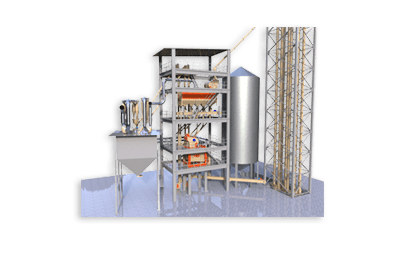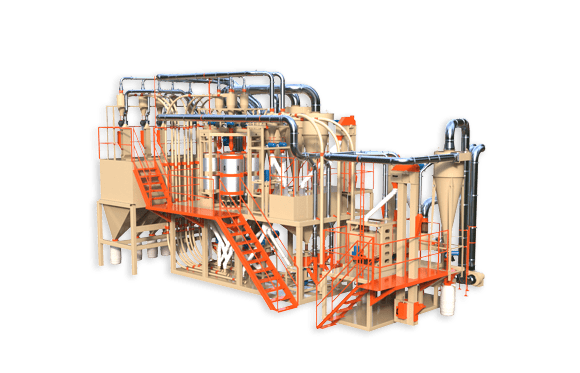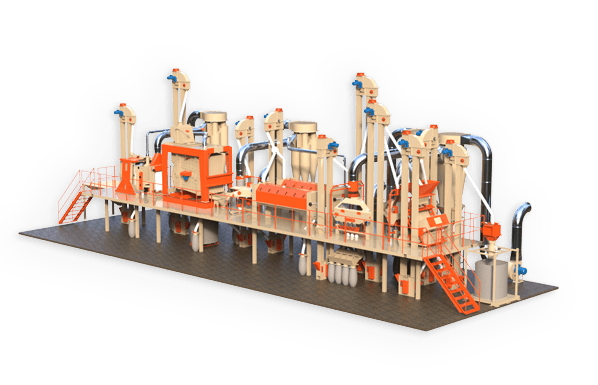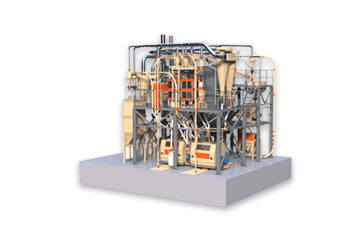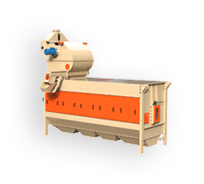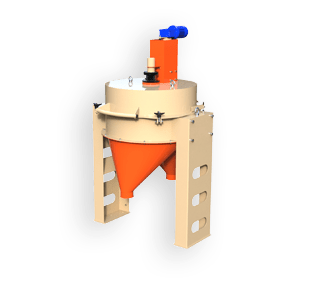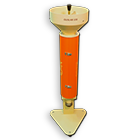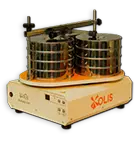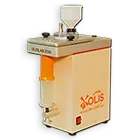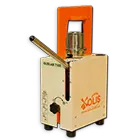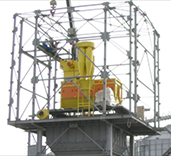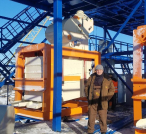A.P. Vereshchinsky, Ph.D. tech. Sciences, General Director of LLC “OLIS” (Odessa)
One of the methods for improving varietal grinding of wheat is peeling the grain when preparing it for grinding. The effectiveness of this method is largely determined by the technical and technological efficiency of peeling equipment.
Based on the results of research and development carried out under the guidance of the author of the article, the design of the “Cascade” peeling and grinding machine was created (patent 97616, Ukraine). The model range of this machine with a productivity of 0.3 to 3 t/h is produced by OLIS LLC. Introduction into production and testing of the operating efficiency of Cascade machines was carried out in Ukraine and Russia at more than 20 mills with a capacity of 15–200 tons/day.
A typical example of such implementation is the work performed at the milling plant of Shevchenko Food Products Plant LLC (Kiev region).
To peel the conditioned grain, two parallel working “Cascade-3.1” hulling and grinding machines were used, each of which is equipped with an aspiration column. After peeling, the grain was fed to the roller machine I dr.s. Tests were carried out at different overall machine performance and at different peeling indices k for each specified performance value.Analysis of laboratory studies of selected grain samples in terms of ash content, moisture content, the number of broken grains and the fractional composition of the separated shells showed almost complete similarity of the results obtained at different productivity and the same k values. Thus, it was confirmed that the quality of peeling products when processed in Cascade machines does not depend on their current productivity, set by the degree of filling of the working area, but is determined by the value of the peeling index k.
Table 1. Quality indicators of conditioned grain
| Indicator | Original grain | Conditioned grain | Hulled grain | ||
|---|---|---|---|---|---|
| k = 3.5% | k = 5.3% | k = 8.0% | |||
| Nature, g/l | 799.5 | — | — | — | — |
| Humidity, % | 11.98 | 15.8 | 15.40 | 15.28 | 15,17 |
| Vitreousness, % | 35 | — | — | — | — |
| Ash content, % | 1.52 | 1.50 | 1.40 | 1.32 | 1.27 |
| Content, %: | |||||
| trash | 0.20 | 0.10 | 0 | 0 | 0 |
| grain impurity | 2.85 | 3.89 | 4.17 | 4.48 | 4.67 |
| broken grains | 2.39 | 2.83 | 3.19 | 3.38 | 3.62 |
| fine grain (pass 2.2×20) | 5.75 | 5.47 | 6.10 | 6.64 | 7.40 |
Analysis of table data. 1 shows that, despite the low ash content of the original grain, its reduction as a result of peeling at an index of 3.5; 5.3 and 8% are 0.1, respectively; 0.18 and 0.23%. The increase in the content of broken grains as a result of peeling is insignificant and amounts to 0.36-0.79%. Taking into account the low content of impurities in the original grain, its presence is not detected after peeling. A slight increase in the content of grain impurities is due to an increase in the content of broken grains. Due to the reduction in grain size as a result of peeling, the content of fine grains slightly increases.
Table 2. Quality indicators of casing products
| Indicator | k = 3.5% | k = 5.3% | k = 8.0% |
|---|---|---|---|
| Humidity, % | 14,19 | 14.53 | 14.77 |
| Ash content, % | 4.20 | 4.70 | 4.00 |
As the values of the hulling index increase, the moisture content of the hulled grain decreases, and the moisture content of the separated shells increases (Table 2). The distribution of moisture between the anatomical components of the grain separated by peeling indicates that as a result of conditioning, higher moisture content was provided to its peripheral parts. At the same time, the moisture content of the separated shells is lower than the moisture content of the shelled grain, which is explained by the drying of the separated shells during the peeling process.
With a peeling index of 3.5%, the temperature of the processed grain increases by 5–7 °C, and at 8% – by 13-15 °C, i.e. When exposed to aspiration air flows in the working chamber of the machine and in the aspiration column, intensive drying of the shells occurs, separated in the form of small particles. Analysis of the ash content of the separated shells (Table 2) shows; that with a peeling index of 3.5% they are represented mainly by fruits. With a peeling index of 5.3%, the aleurone layer partially enters the composition of the separated shells, causing a significant increase in the ash content of the separated product. The decrease in the ash content of the separated product to 4% with a peeling index of 8% is explained by the presence of a certain amount of endosperm in its composition. It should be noted that for all specified values of the peeling index, uniform processing of individual grains is observed.
Table 3. Power consumption of Cascade-3.1 peeling and grinding machines
| Productivity, t/h | Power consumption, kW | ||
|---|---|---|---|
| k = 3.5% | k = 5.3% | k = 8.0% | |
| 3.0 | 26.1 | 32.1 | 39.3 |
| 2.4 | 24.8 | 26.6 | 32.2 |
| 2.0 | 24.0 | 25.3 | 27.4 |
Analysis of table data. 3 shows that for each fixed value of the peeling index, the amount of energy consumed by the Cascade machine to process a unit of grain mass is proportional to the installed power utilization factor. Thus, with a peeling index of 3.5% and productivity of 3 and 2 t/h, the amount of energy consumed was 8.7 and 12 kWh/t, respectively, with a peeling index of 8% and the same productivity – 13 and 13.7 kW, respectively. ·h/t.
This dependence is due to the significant idle power consumption of Cascade machines, which, due to the elimination of losses on mechanical transmission due to the use of direct drive of the machines, approaches the idle power of their electric motors and for of the tested machines as a whole is 21.8 kW.
Table 4. Net power of “Cascade-3.1” peeling and grinding machines”
| Productivity, t/h | Net power consumption, kW | ||
|---|---|---|---|
| k = 3.5% | k = 5.3% | k = 8.0% | |
| 3.0 | 4.3 | 10.3 | 17.5 |
| 2.4 | 3.0 | 5.2 | 10.4 |
| 2.0 | 2.2 | 3.5 | 5.6 |
Table data. 4 confirm the previously obtained conclusions that the energy consumption for the implementation of peeling processes at fixed values of the peeling index is proportional to the degree of filling of the working area of the peeling-grinding machine. Thus, with a peeling index of 3.5%, productivity of 3 and 2 t/h, the amount of useful energy consumed was 1.43 and 1.1 kWh/t, respectively, and with a peeling index of 8% – 5.8 and 2, respectively. 8 kWh/t.
To compare the energy intensity of peeling in different modes, it is advisable to use the values of power consumption or its useful component (useful energy), related to the unit mass of the processed grain and to the peeling index k, i.e. specific energy values. Taking into account the data in table. 3 and 4, the minimum value of the specific energy consumption, determined as described above, is observed at k = 8% and a productivity of 3 t/h and is 1‚64 kWh/(t·%)‚ and the maximum value is at k = 3 ‚5% and productivity 2 t/h – 3.43 kWh/(t·%).
The value of specific useful energy with a peeling index of 8% and a productivity of 3 t/h is 0.73 kWh/(t%)‚ and with a peeling index of 3‚5% and productivity 2 t/h – 0.32 kWh/(t·%).
I.R. Dudarev* when testing the U1-BSHR screw press machine, designed for peeling pre-moistened wheat grain in order to prepare for grinding, with a machine productivity of 7, 2-6, 7 t/h, drive power consumption of 16-24 kW and a peeling index of 1 –2% received a specific consumption of useful energy equal to 1‚72–3‚05 kWh/t. Consequently, the specific value of consumed energy was 1.79–2‚22 kWh/(t·%), and useful energy – 1.52–1.72 kWh/(t·%).
Since the U1-BSHR machines are designed to separate only the fruit shells of grain, i.e. work with a peeling index of up to 3%, then we can conclude that the “Cascade” type machines have a higher technological efficiency, implementing peeling processes with high values of the peeling index and at lower energy intensity values. It should be noted that the idling power of the U1-BSHR machine during testing was only 3.6 kW, which is extremely insufficient for currently produced electric motors.
According to the results of research by A.I. Kondratyeva‚ B.M. Maksimchuk, A.M. Bratukhin and A.F. Timukas, in preparation for grinding wheat grain in an A1-ZShN hulling and grinding machine with an installed electric motor power of 22 kW and a peeling index of 2.5–3.5%, a productivity of 3-4 t/h was ensured. Taking into account the maximum value of the installed power utilization factor of 0.89, adopted when testing the Cascade-3.1 machines, the energy consumption for peeling in the A1-ZSHN machines is about 1.86 kWh/(t%), which is approximately 14 % less than in Cascade machines.
Attempts by some millers to use A1-ZSHN machines for peeling conditioned wheat grain showed their low technological efficiency and unsuitability for processing with peeling indices of more than 3%. The passport data of these machines establishes an increase in the number of broken grains up to 2%, which is not true for most processing modes required when preparing wheat for grinding. With an increase in the peeling index above 3%, the number of broken grains increases sharply, taking on unacceptable values. In addition, with an increase in the peeling index, the unevenness of processing of individual grains is significantly manifested: some grains almost completely retain the shells, while others lose not only the shells, but also part of the endosperm. It is obvious that further processing of grain hulled in this way is futile.
According to the results of tests, the technical and technological efficiency of “Cascade” type peeling and grinding machines is significantly higher than their known analogues. The experience of operating these machines at a number of milling plants confirms their level of efficiency sufficient for successful use in varietal wheat grinding technologies.
published in the publication “Bread Products” 11/2012
- * Dudarev, I.R. Scientific and technical foundations of process intensification and the creation of machines for grain surface treatment: diss…. Doctor of Engineering Sciences / I.R. Dudarev. – Odessa, 1989. – 437 p.


